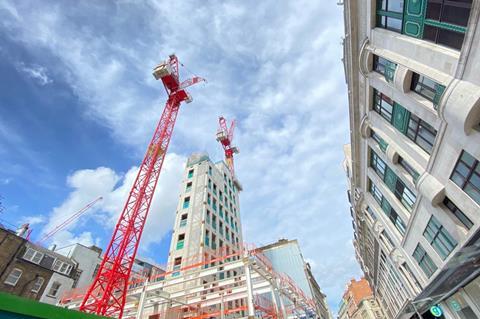Figure stays above 50 no change mark for sixth successive month
Construction activity stayed in the black for the sixth successive month thanks to growing commercial workloads and increased housing activity.
The S&P Global UK construction Purchasing Managers’ Index stood at 53.8, down from 55.3 recorded in July, a two year high, but still up from the 52.2 posted in June. Any score above the 50 no change mark indicates growth.
The report said: “Robust new order growth and a more supportive economic backdrop underpinned the latest recovery in construction output volumes.”

Commercial activity was the best-performing sector with a score of 53.7 while civil engineering posted a reading of 51.8. Residential grew at its fastest rate for nearly two years with a score of 52.7.
The report added: “Survey respondents suggested that improving economic conditions and greater domestic political stability had lifted customer demand.”
S&P economics director Tim Moore said: “The UK construction sector appears to have turned a corner after a difficult start to 2024, with renewed vigour in the house building segment the most notable development in August.”
And Thomas Pugh, economist at RSM UK, said: “The drop in the construction PMI in August is down to the unwinding of the massive jump in civil engineering in July, which looks more like noise to us.
“Overall, the ongoing economic recovery in the UK is clearly now also being reflected in the housing market and the construction sector. Mortgage approvals jumped in July and annual house price growth picked up as well, clear signs of a revival in the housing market.”
But Aecom’s head of cost management Brian Smith warned that planned public sector spending cuts by new chancellor Rachel Reeves would need to be replaced by a rise in private sector jobs.
He said: “Spending cuts anticipated in next month’s Budget have the potential to impact government spending. Contractors will be hopeful that any decline in government spending is balanced out by a resurgence in private sector work.”



























No comments yet